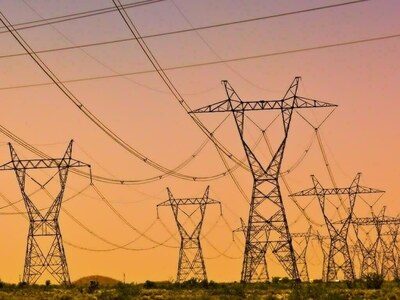Pakistan’s Precarious Energy Security

Pakistan suffered a country-wide power breakdown on January 23, and it took nearly 72 hours for the system to regain its pre-failure capacity. The much awaited inquiry report to fix the responsibility for that blackout was presented to the federal cabinet on March 02. Chairing the meeting, Prime Minister Shehbaz Sharif said, “The nation was awaiting strict action against those responsible for the incident that left the country in a power blackout for several hours”.
The inquiry report has revealed that an abnormal increase in the frequency of the alternate current line tripped the automatic security system of power plants. It also said that the Kot Addu power plant had the facility of ‘black start’, however, due to the expiry of the contract of the plant, it could not be made operational. Black Start is the procedure to recover from a total or partial shutdown of the transmission system causing an extensive loss of supplies. The Prime Minister has directed the Power Division to hold a departmental action against those held responsible for the ‘human and technical error’. He also ordered to take necessary steps to line the power system with Supervisory Control and Data Acquisition (SCADA).
Though Pakistan has electricity generation capacity (41,557 MW) that far exceeds the peak summer season demand (31,000 MW), the sustained useable supply is not sufficient for providing stable power even during the low demand winter season. The under-capacity transmission and distribution infrastructure imposes a glass ceiling of 22,000 MW with regard to peak usage. Load shedding is nothing new in Pakistan. Businesses install backup thermal or solar generators and so do households that can afford them. Pakistan’s electricity woes have added to the country’s precarious financial dilemma.
Performance of Pakistan’s energy sector has been of a roller coaster trajectory. Over the decades, our National Energy Policy has been patchy—focused more at fire fighting rather than achieving the objective of sustainable self-reliance. Pakistan’s energy dilemma is rooted in: unrealistic expectations with regard to maturation of non-viable international promises such as IPI/IP, CASA 1000, TAPI etc; technical deficiencies; loss embedded contracts; fuel-inefficient power generation; prolonged negligence with regard to ignoring the necessity of up-grading transmission/grid infrastructure; inadequate utilization of available energy generation capacity due to high and or fluctuating cost of imported fossil fuels; baggage of national obligation with regard to capacity payment clauses of sovereign guarantees towards money fleecing Independent Power Plants (IPPs) etc.
The report has highlighted serious governance issue regarding revenue collection. Losses due to various reasons, ranging from line losses to defaulting on payments in some areas exceed 60 percent — although now those areas face regular power outages as a result of high losses. The federal cabinet has proposed that a special police force be deployed in areas with 60 percent and more line losses. As of now, a major chunk of the cost attributed to so called line losses is passed over to the bill paying consumers. Ever increasing price of electricity has inflicted a perpetual feeling of helplessness on bill payers. Even payment of high tariff does not mean that stabilized electricity would be available 24/7.
Energy policy-making in Pakistan is lobby influenced by hydro carbon (fossil) fuel importer cartels, resulting in underutilization of plenty of environment friendly and cheaper options— hydel, solar, nuclear etc. Resultantly, energy carries a high price tag. Moreover heavy dependence of electricity generation on imported fuels, having volatile price fluctuation, places constraints and causes uncertainty as to how much electricity can be generated and for how long.
In Norway, Brazil and Canada, hydropower accounts for 93.4 percent, 63.5 percent, and 58.8 percent of electricity generation respectively. In Pakistan, installed hydropower generation capacity is around 15% of total hydro potential. As regards global trends, the 27th Conference of the Parties (COP27) has spoken volumes about solar, wind, hydrogen and electric vehicles. According to Syed Akhtar Ali, former member energy of the Planning Commission, “Solar is the new hero of today and tomorrow. Solar PV would generate 38-50% of the world’s electric power (10,000-14,000 Gigawatts). Hydropower may never go beyond 1,500 GW”. The emergence of cheaper and widely available sources like solar and wind has diluted the attractiveness of hydropower. Hydropower’s capital intensity in an atmosphere of high interest rates has also become a negative factor. Current capital cost is $2.5 million per MW and generation cost is 8-10 US cents per kilowatt-hour (kWh), as opposed to $0.60 million per MW and 2-4 US cents per kWh of solar PV plants. However, hydropower is a much sought-after source of electricity in our region including India, Pakistan and Nepal due to the Himalayas.
Over a dozen entities deal with electricity generation and selling cycle, with hardly any meaningful coordination amongst them, some of these are kept in semi-dormant status. The Prime Minister recently ordered to carry out restructuring and capacity building of one such, hardly heard of, organization–National Energy Efficiency and Conservation Authority (NEECA). He has directed that the experts in NEECA should devise a strategy for energy savings in the sectors of construction, industry, communications, power, and agriculture. Another weak area is piece meal implementation of policy—say, focus on production while ignoring other systemic weaknesses resulting in the availability of plenty of electricity which cannot be put to use.
The fault lines of Pakistan’s Electricity System are too many, and there are numerous powerful entities and individuals who are beneficiaries of continuation of these systemic flaws, hence keeping the energy sector in a paralysed state. Causes, effects and remedies are all well known to every one ranging from a commoner in the street to every Energy Czar. There is also no shortage of policy documents and organizational structures to undo these flaws. What lacks is the will to carry through a policy over required length of time to produce enduring results. A cohesive, well-planned, and long-term strategy cognisant of on-the-ground realities is needed to end the dearth of investment needed for the growth of sustainable energy security solutions.
Development of a modern and efficient energy distribution network, along with a robust energy storage system, is crucial in ensuring consistent supply of affordable electricity to the end users.
The energy sector requires a comprehensive overhaul with a focus on addressing the underlying causes the issues afflicting the power sector is direly needed. Only through a concerted effort to tackle these root causes can Pakistan hope to achieve a sustainable and equitable energy future.


